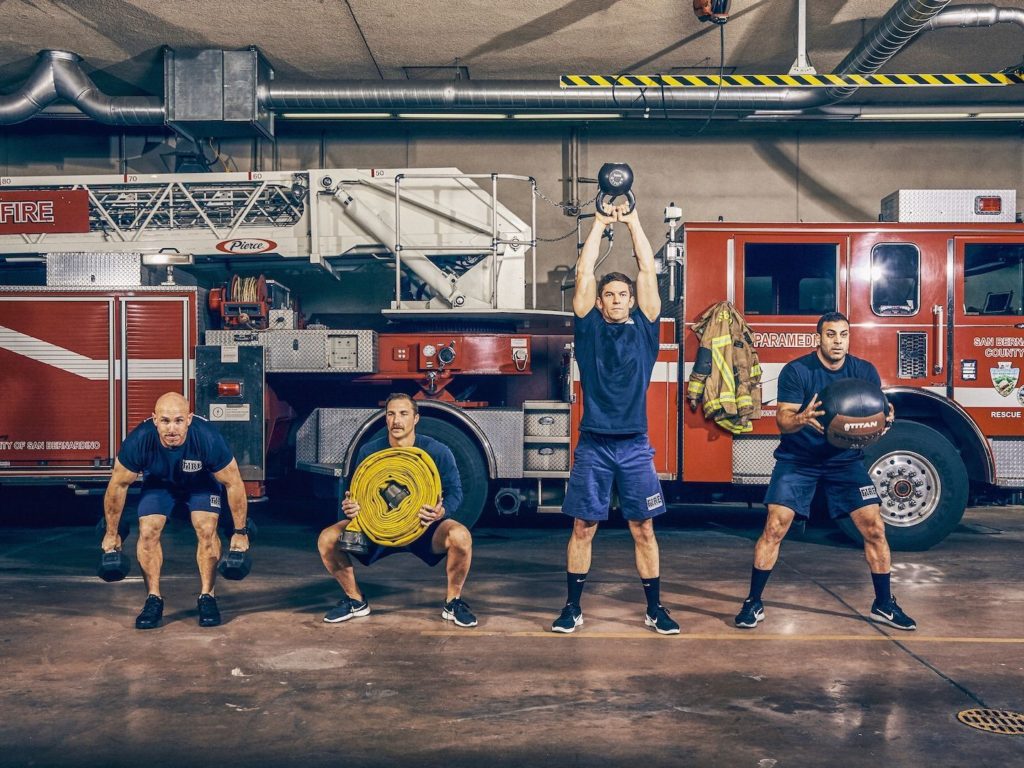Spring 2022
Functional Fitness Tips for Firefighters

What is the best way to improve fitness as firefighters?
According to a 2019 study published in the Journal of Occupational Medicine and Toxicology entitled ‘Examining a novel firefighter exercise training program on simulated fireground test performance,’ firefighters struggle with poor health/low levels of fitness, including high (> 80%) rates of overweight and obesity.
That same study, however, also found increased estimated VO2max, improved body composition, and improved grip strength in firefighters who successfully completed a high-intensity functional training program versus those who didn’t.
While experts emphasize the importance of improving cardiovascular capacity, some firefighters may only choose to lift weights, neglecting other important aspects of overall fitness.
Functional fitness is a method that uses real-life activities and positions to best prepare tactical athletes for optimal firefighter performance. In other words, fitness training must directly reflect the level of dynamic fitness required to be a firefighter.
Thinking about functional fitness training in terms of “the Big Eight” will help you improve your ability to execute basic fireground tasks, reduce the occurrence of injury, increase resiliency, and improve the recovery process.
“The Big Eight” consists of the following:
- Push
- Pull
- Carry
- Lift
- Drag
- Core
- Capacity
- Flexibility
“The Big Eight” encompasses three general fitness fundamentals: flexibility/core strength, cardiovascular capacity, and strength training. By adding the fourth fundamental, nutrition and lifestyle, you can begin to develop a roadmap to optimal firefighter functional fitness. Functional fitness has many options and approaches, but it is the best solution to help you be fit for duty and enjoy a long career in the fire service.
FLEXIBILITY
Flexibility and core strength are often the most neglected areas of firefighter fitness. However, improving these elements has been shown to decrease the frequency and severity of sprains and strains, according to a research study performed by Matthew T. Anderson (2002).
There are many approaches to obtaining a strong core and increasing flexibility. From a holistic standpoint, yoga is a very effective medium for improving both flexibility and core strength.
Alternative Exercises That Help Improve Core Strength:
• Hanging leg raises
• Prone leg raises
• Russian kettlebell Turkish getups
• Russian kettlebell Swings
• Leg lifts
• Planks
• Variations on the sit-up
CARDIOVASCULAR CAPACITY
When engaging in strenuous fireground activities, firefighters frequently meet or exceed their theoretical maximum heart rate. Even the fittest firefighters experience extreme strain on their bodies while on the fireground.
There are two primary ways to improve cardiovascular capacity: 1) High-intensity interval training (HIIT) and 2) endurance-based cardiovascular training.
HIIT combines alternating periods of intense anaerobic exercise with less-intense recovery periods. Endurance-based cardiovascular training performs medium-intensity physical activity that elevates and maintains 70 percent of your maximum heart rate. For example, this could be running at a speed of 6-7 MPH for a total of 30 minutes. Alternatives would be 30 minutes of the following: swimming, biking, rowing, etc.
STRENGTH TRAINING
Strength training is the third fundamental component of functional fitness. Firefighters tend to traditionally equate strength training to lifting weights. However, functional strength should directly relate to the ability to carry, lift, drag, push, and pull.
While it is critical to lift heavy things in order to get stronger; it’s also important to focus on the areas of the muscle groups that demand the most out of us, such as the legs, shoulders, triceps, lats, and grip strength.
» ALSO SEE: Norfolk Fire/Rescue Focuses on Physical & Mental Health Training
Strength Training Exercises to Consider:
• Front Squats
• Back squats
• Loaded carries (especially up and down elevations and with asymmetrical weight distribution)
• Overhead presses
• Hose pulls
• Battle ropes
• Pull-ups
• Push-ups
• Rows
• Lunges
• Barbell deadlifts
• Bench Press
Taking a functional approach to fitness will benefit you the most in what you do on the fireground.



